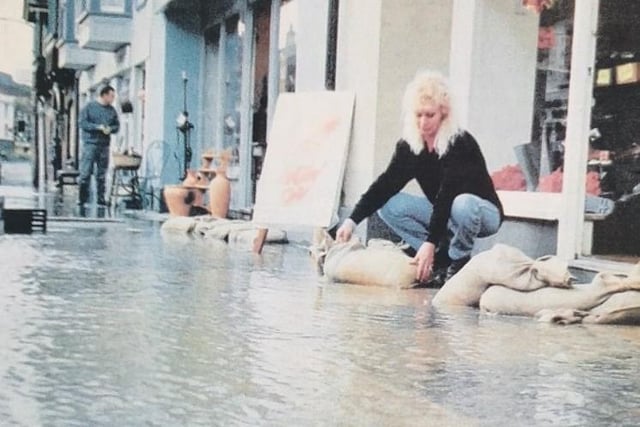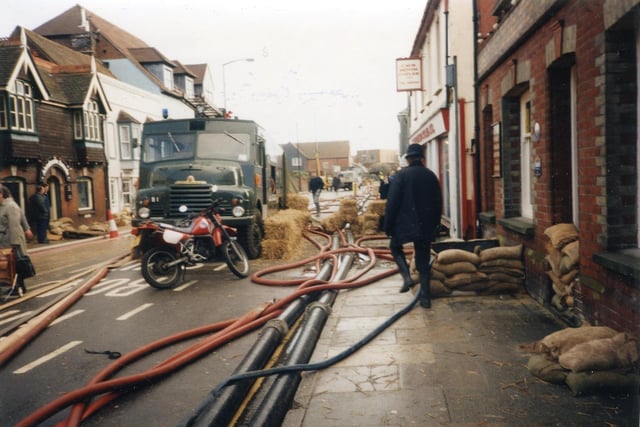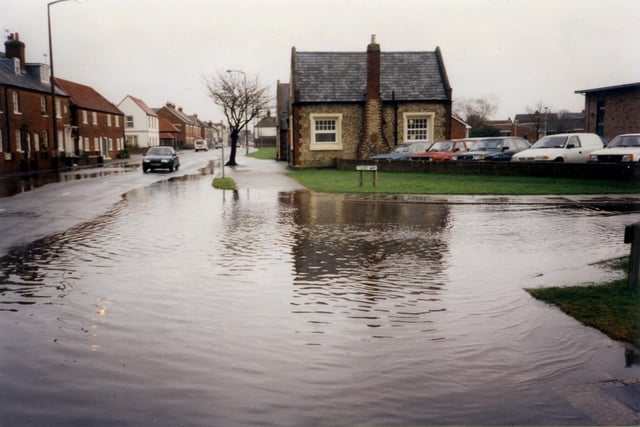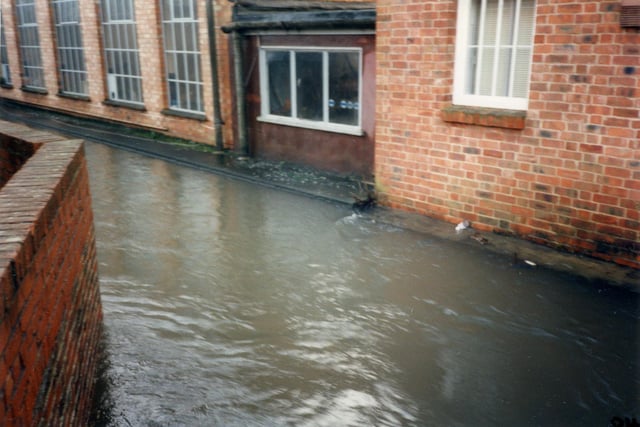A boat floating past the windows in Singleton and a temporary bridge over a roundabout which had effectively sunk below the waves were just some of the scenes from January 1994.
Chichester had been brought soggily low by the worst flooding for more than 100 years and the nightmare saw the city become the focus of national attention.
There was an enormous amount of damage and some genuinely believed it was a judgement on Sunday trading coming to the city. Others said it was the direct result of years of building on the flood plain. Either way, it put the whole city on an emergency footing at an extraordinary time.
Just before Christmas in 2013, the city’s flagship Sainsbury’s had burned down and after the fire came the floods. Many look back on it as a time when Chichester rediscovered its community spirit.
The army moved in to build bridges over impassable roundabouts, the fire brigade worked round the clock in a massive pumping operation and Cicestrians everywhere turned out in support.
The River Lavant, often dubbed 'our little stream’, brought chaos to the eastern side of the city in the early weeks of 1994. Usually modest, the river was transformed beyond recognition into a raging, gushing mass of water.
Suddenly flowing with colossal force, it burst its banks in Chichester for the first time in half a century. The immediate effect was that huge quantities of water poured into The Hornet and New Park Road.
You have to go back to the 18th century for something similar. From the memoirs of James Spershott, an important document in Chichester’s history, we learn of what happened in 1771.
"The new bridge built over the Lavant without the East Gate before which the water lies open, spread wide and, when the springs were high, flow’d from within a few yards of East Gate into The Hornet as far as the Poor House, and was so deep in the current that I have seen it above the beds of the waggons. There was then only a narrow bridge of two stone arches from The Hornet to the Pancras for horse and foot people.”
Back to 1994 and then, the drama brought national attention. The rest of the country watched aghast as Chichester was portrayed as a latter-day Atlantis, sinking and utterly cut off. It was the eastern side of the city, as well as countless villages, which bore the brunt but all the traders suffered as the myth pervaded that Chichester had more or less shut down.
Meanwhile, frantic efforts continued out on the streets and behind the scenes. As West Sussex County Council co-ordinated the city's emergency response, sheer camaraderie brought everyone together in the command centre as staff worked long hours and under intense pressure.
The 'bunker' operated for about ten days, some of which meant up to 17 hours on duty. Everyone worked as a team and all the emergency planning swung into action. There was never a moment when the team feared the situation was getting out of control.

1. Chichester flooding January 1994
Diana Russell surveying the sandbags outside her shop in The Hornet Photo: Chichester Observer

2. Chichester floods January 1994
The Hornet, looking east, after flooding in January 1994 Photo: Chichester Observer

3. Chichester floods January 1994
Flooding at the junction of St Pancras with Tozer Way in January 1994 Photo: Chichester Observer

4. Chichester flooding January 1994
Needlemakers bridge, looking east Photo: Chichester Observer